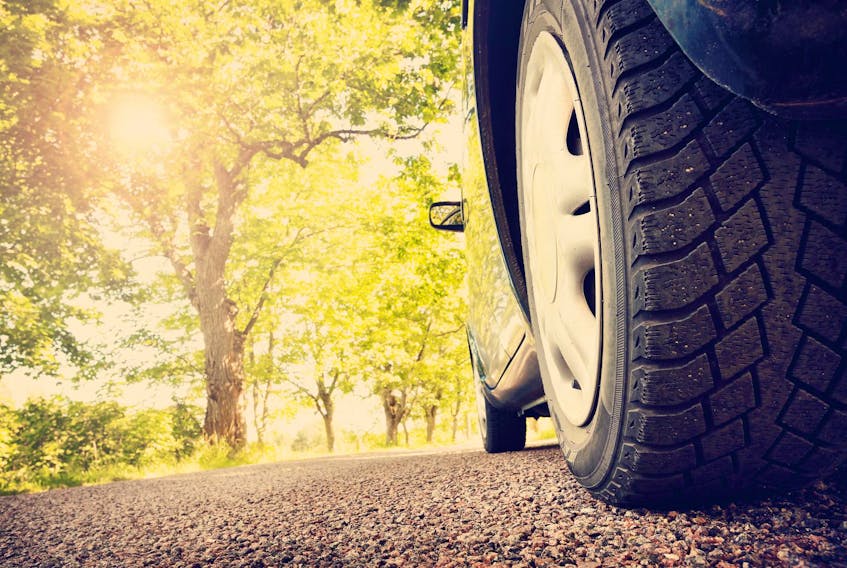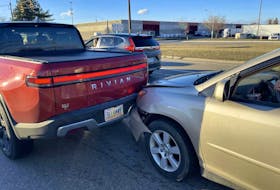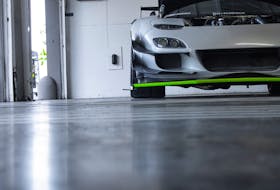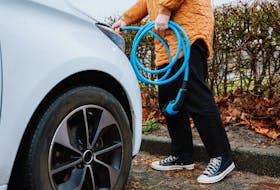Correct tire pressure is critical for safe vehicle operation. Unfortunately, it’s been estimated that about one out of every four vehicles on the road is running on under-inflated tires.
Few drivers check tire pressure on a regular basis, and you can’t tell if a tire has correct pressure simply by looking at it. Starting in 2007, it was mandated by the U.S. Department of Transport that most vehicles be equipped with systems to monitor tire pressure and as Canadian vehicles share much with vehicles sold in the U.S., we also have these systems.
The U.S. regulations for monitoring tire pressures applies to light duty trucks and passenger vehicles with a gross vehicle weight rating of 4,536 kg (10,000 lb.) or less.
A warning light on the dash must indicate to the driver there is a low tire whenever a tire pressure drops to 25 per cent below the rated cold tire inflation pressure recommendations for that vehicle.
The system must provide this warning within 20 minutes of when a tire pressure drops below the specified pressure. Finally, the tire pressure monitoring system (TPMS) must turn on a warning if the system or one of the tire pressure sensors has a malfunction.
There are two basic types of tire pressure monitoring systems. The first uses wheel speed sensors to monitor tire rotation. If a tire is low on pressure, it has a smaller rolling diameter and the speed sensor will show a higher rpm for that wheel.
These systems require the vehicle to be driven before the driver can be warned of a low tire pressure.
The most common systems use a pressure sensor on each wheel and they send a radio signal to a central module that controls the warning light on the dash.
Many of these systems will even display actual tire pressure on the vehicle’s information system.
The sensors themselves are powered by crystals inside the sensor that generate electricity from vibrations of the wheel.
When changing to between winter and summer tires, it is much easier to have a second set of wheels. Additional sensors can be purchased and installed on the second set of wheels that will work with your vehicle’s tire pressure monitoring system.
Another alternative is an aftermarket system. There are aftermarket systems that use sensors mounted inside the tire on the wheel but for ease of use the systems I prefer use a small pressure sensor that mounts on the valve stem.
Simply remove the valve cap and screw on the sensor. Some of these come with an additional lock nut to reduce the possibility of someone “borrowing” one of your sensors. With the sensors installed, the monitor mounts inside the vehicle and displays the tire pressure on its display.
The aftermarket systems are especially beneficial to those that tow trailers. For safe towing, correct tire pressures are critical. Several of the aftermarket systems come with six sensors and can monitor up to 22 sensors.
On a multiple axle trailer, if one tire goes flat, it places a huge load on the remaining tires and this can cause a blowout. With these systems, you can detect a tire that is low on pressure long before any damage to the tire occurs or it becomes a safety concern.
Many of the recreational vehicles I see stopped on the side of the road are due to flat or blown tires and they are the lucky ones. It is all too easy to end up off the road when a trailer tire fails so these sensor systems and safety and peace of mind.
So far all the tires we use in passenger vehicles and on trailers are inflated with air, or in some cases nitrogen gas. Nitrogen gas doesn’t contain moisture and has a larger molecule that the oxygen is normal air so it leaks more slowly out of a tire.
It is normal for a tire to lose 1 PSI of air per month but when filled with nitrogen, it can take up to three months to lose 1 PSI.
In the future we may not have to worry about checking tire pressures. General Motors is currently testing Michelin’s TWEEL tire and wheel assembly for passenger vehicle use.
The TWEEL is a composite poly-resin structure that combines flexible web of a wheel with a tread all as one unit. It needs no air as the structure supports the vehicle and the flexibility provides the ride and handling.
It also wears longer than conventional tires. If this sounds like science fiction, the TWEEL is already offered on some ride-on John Deere mowing equipment. Can our vehicles be far behind?
Jim Kerr is a master automobile mechanic and retired teacher of automotive technology. Send your questions for Jim via email or mail them to: Herald Wheels, 2717 Joseph Howe Drive, P.O. Box 610, Halifax, N.S. B3J 2T2









